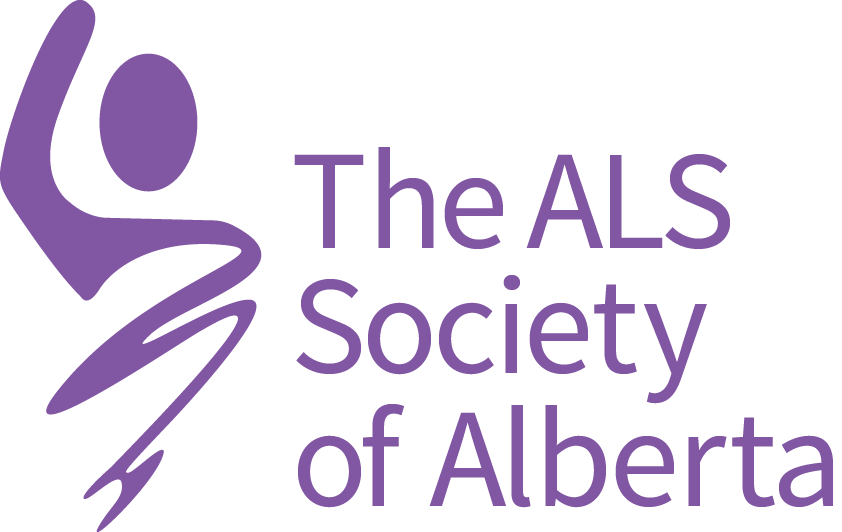The ALS Society of Alberta is proud to be one of the largest donors to the national ALS research program, which funds incredible researchers in Alberta and nationwide. ALS is difficult to diagnose because no single test or procedure can firmly identify the disease. Current diagnostic tests for ALS focus on ruling out other diseases that share similar initial symptoms. For example, magnetic resonance imaging (MRI) is a test typically used to eliminate a diagnosis of cancer, multiple sclerosis or pressure on the spinal cord due to arthritis. A standard MRI analysis of a person with ALS, however, usually shows normal results.
The lack of a reliable diagnostic test for ALS means that it takes on average about a year for a diagnosis to be confirmed. “The delay means we can’t help people sooner, nor identify them early enough to enter a clinical trial,” said Dr. Sanjay Kalra in an interview. “This issue is actually hindering the clinical investigation of drug therapies. If we could identify people with different types and progressions of ALS more quickly, we could find a breakthrough therapy faster. A test is desperately needed that can determine if a drug is working in clinical trial.” Dr. Kalra is a professor in the department of medicine (neurology) and member of the Neuroscience and Mental Health Institute at the University of Alberta.
Looking for ALS in Brain Images
Dr. Kalra has been intrigued with finding a way to harness the power of imaging to uncover the early signs of ALS since his medical residency when he met neurologist Dr. Douglas Arnold, an MRI specialist at the Montréal Neurological Institute and Hospital. “My residency research rotation was only supposed to last six months, but after realizing the potential power of this technology in research and really enjoying working with people with ALS, I decided to continue and eventually stayed as a postdoctoral fellow specializing in MRI for ALS,” said Dr. Kalra.
Dr. Kalra has secured funding for his imaging research program from a number of sponsors including the Canadian Institutes of Health Research (CIHR), the major agency of the Canadian government responsible for funding health research in Canada. His focus has been to develop and validate advanced MRI methods that can be used as a biomarker, a biological marker that allows physicians to detect disease earlier, monitor disease progression and evaluate new therapies.
In 2013 he founded the Canadian ALS Neuroimaging Consortium (CALSNIC), a multidisciplinary team of experts from across Canada that includes neurologists, MRI scientists, computing scientists, neuropathologists and a biostatistician. Since then, the CALSNIC team has been working together on a national scale to develop advanced MRI methods to find biomarkers in people with ALS and related conditions.
Dr. Kalra and three colleagues at the University of Alberta in Edmonton conducted a preliminary study in 2014-2015 to look for biomarkers in brain images using MRI scans of 19 people with ALS and 20 healthy participants for comparison. They analyzed the images with 3D texture analysis, an advanced method that allowed them to look for statistically significant patterns of brain degeneration not normally visible to the naked eye. They examined voxels, tiny 3D spaces in the brain about a cubic millimetre in size.
The researchers found different texture features in regions of the brain affected by ALS and frontotemporal dementia in people with ALS compared to people without ALS. They also discovered that some features were associated with clinical observations, such as disease duration and differences in finger tapping speed. The study was funded in part by an ALS Canada Discovery Grant.
Going Big: The First Large Imaging Study in the World
Based on encouraging research results in this preliminary study and other work, Dr. Kalra wants to confirm the findings in a larger group of people with ALS. “The ALS field has seen an explosion of imaging studies in the last five years, but for the most part, they have been single-centre studies that used different methods in small groups of patients, so it has been difficult to draw conclusions on the best method to use,” he said. “To develop and validate the use of MRI biomarkers , especially for their potential use in clinical trials, we need to confirm that our these methods will work well on a large scale, in every clinic.”
In 2015, Dr. Kalra and a team of 13 other investigators applied for a grant from ALS Canada and were successful. The resulting ALS Canada – Brain Canada Arthur J. Hudson Translational Team Grant of $2.94 million – the largest grant awarded in ALS Canada’s history – is funding the first large multicentre imaging study focused on ALS in the world, according to Dr. Kalra. The study seeks to enroll over 700 volunteers split between people with ALS and people without ALS for comparison in seven locations: Calgary, Edmonton, Vancouver, London, Toronto, Montreal and Quebec City. Some sites are currently recruiting and others will be up and running soon. Participants receive a baseline MRI and clinical evaluation followed by two follow-up visits.
Always thinking ahead, Dr. Kalra is already considering how to expand CALSNIC further to increase the value of the network. “Another purpose of setting up the CALSNIC infrastructure is that it allows us to probe other questions. I’m excited that it has spurred other ALS research and collaborations,” said Dr. Kalra, “such as at the University of Toronto where Dr. Yana Yunusova is studying speech changes in patients across the CALSNIC network and will be able to compare the findings with our imaging data. In the future, I would like to see CALSNIC build a comprehensive resource of tissue, imaging and clinical descriptions that all scientists can access to understand the disease better.”

